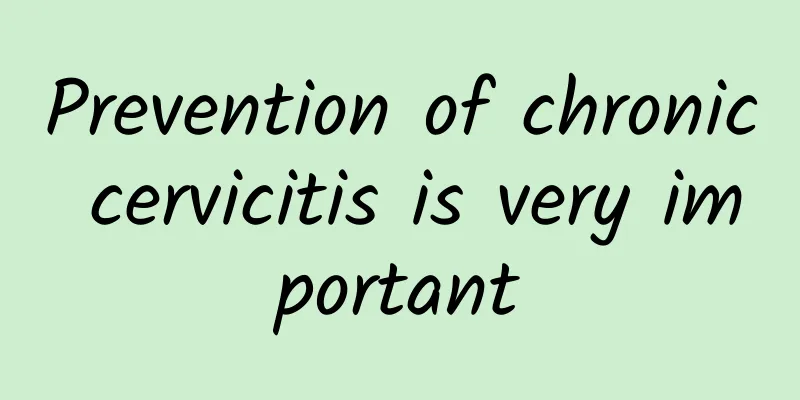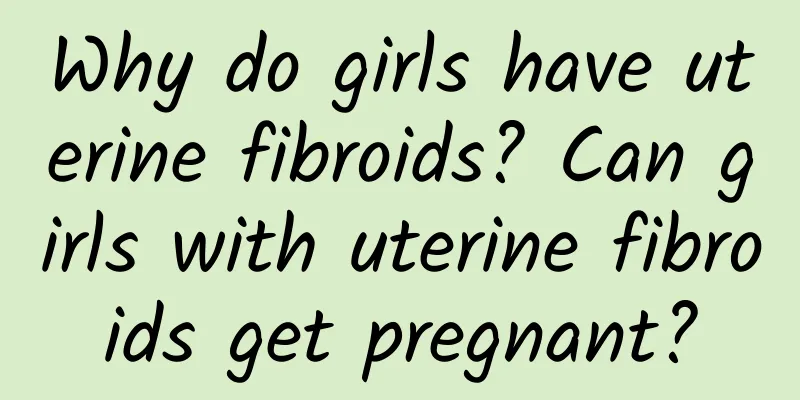How to prevent cervical warts

|
You may have some understanding of cervical warts. It is a contagious sexually transmitted disease, which is caused by promiscuous sex in most cases. Generally speaking, people's health will be greatly affected after suffering from cervical warts. So how should cervical warts be prevented? 1. Vigorously carry out publicity and education work This work is a work for the whole society. The publicity and education work should reach all levels of society, especially the 15-50 age group. Both men and women should be made aware of the relevant knowledge of STDs, the transmission routes and characteristics of STDs, and the harm caused by STDs to human physical and mental health. Through publicity, the public's awareness of STDs can be improved, people's sense of responsibility to their families and society can be enhanced, and people's awareness of self-protection can be enhanced, so that everyone can keep themselves clean and reduce the chances of infection with STDs such as cervical warts. 2. Reduce the chance of infection and avoid high-risk sexual behavior Patients with cervical warts who have sexual partners should be regularly checked for cervical warts or HPV infection. Because most reinfections of cervical warts are related to cervical warts and HPV infection in their sexual partners, sexual contact with them should be avoided to reduce the chance of reinfection after treatment. People should be made aware of the safety of casual sex and change their sexual behavior to reduce the risk of cervical warts. 3. Early detection, early diagnosis, and early treatment For those who have a history of contact with sexually transmitted diseases, they should always pay attention to observe whether there are any lesions in the external genitalia. At the same time, they can see a sexually transmitted disease specialist and conduct relevant examinations to ensure early detection, early diagnosis and early treatment. 4. Patients with cervical warts should respect their right to health. After suffering from cervical warts, you should tell your family members or other people in your collective life about your illness so that they can take appropriate precautions. Before the cervical warts are cured, you should be careful to avoid transmitting the disease to others. Do not have sexual intercourse, do not bathe or swim in public baths (swimming pools), and do not abuse other people's belongings. Even if the cervical warts no longer exist after treatment, you should still do this for a considerable period of time, at least within half a year. If there are no cervical warts, it is recommended to use condoms during sexual intercourse to reduce the chance of cervical warts and HPV infection. |
<<: How to prevent cervical warts
>>: How to prevent cervical warts
Recommend
Eating red meat (80%) increases the risk of colorectal cancer recurrence
The Department of Health released the latest canc...
What injection can prevent menstruation?
If you want to avoid menstruation by injection, y...
2 sets of weight loss exercises to effectively eliminate elephant legs
How to lose weight on your legs? Relaxing the hip...
What to drink to get better faster for dysmenorrhea and cold uterus
Drinking warm brown sugar ginger tea can effectiv...
Treatment of uterine fibroids and adenomyosis
Female friends are most reluctant to feel uncomfo...
How to treat right appendage inflammation
Right adnexitis usually requires medication and l...
Cabbage instead of noodles, low-sugar diet makes you lose weight
We can also use cabbage or bean sprouts instead o...
Women should know about the symptoms of pelvic inflammatory disease
Women are also prone to pelvic inflammatory disea...
Get rid of obesity and diabetes weight loss surgery to help
Losing weight can also get rid of the threat of d...
What are the disadvantages of having an abortion?
Artificial abortion is now the main means of term...
Is it still necessary to screen for uterine fibroids? How to screen for uterine fibroids?
Uterine fibroids, also known as uterine leiomyoma...
Will eating rapeseed in early pregnancy cause miscarriage? High nutritional value
Rapeseed is a food that we often eat. In fact, it...
Experts tell you how to prevent cervical hypertrophy in women
Many women will suffer from cervical hypertrophy....
What fruits should not be eaten during menstruation? Principles for choosing fruits
Being impatient and emotionally unstable are emot...
What are the misunderstandings in the treatment of cervical warts
The clinical probability of cervical warts is ver...









